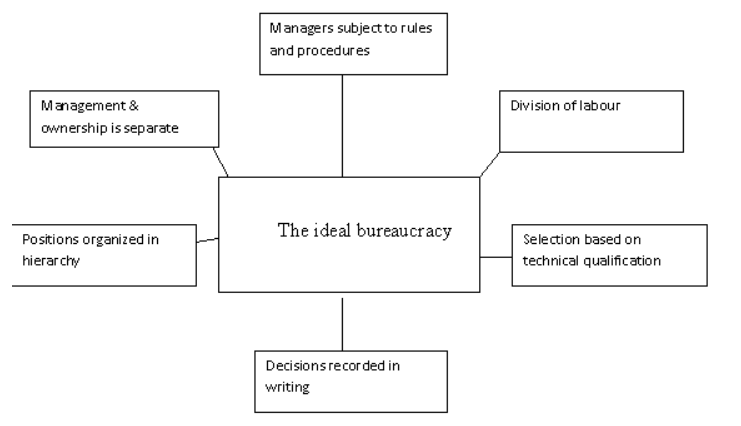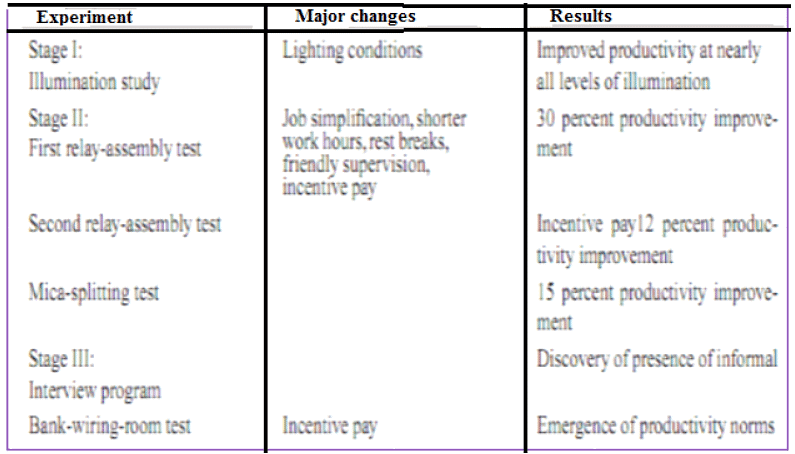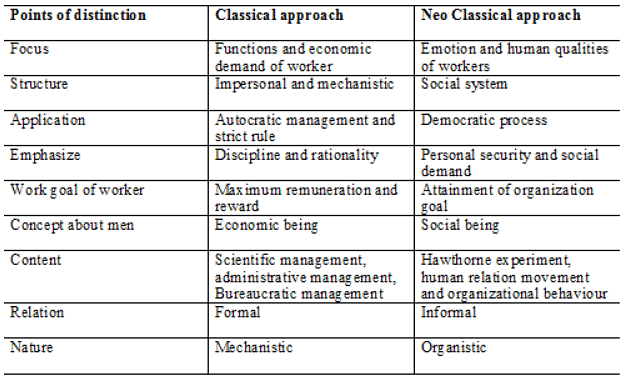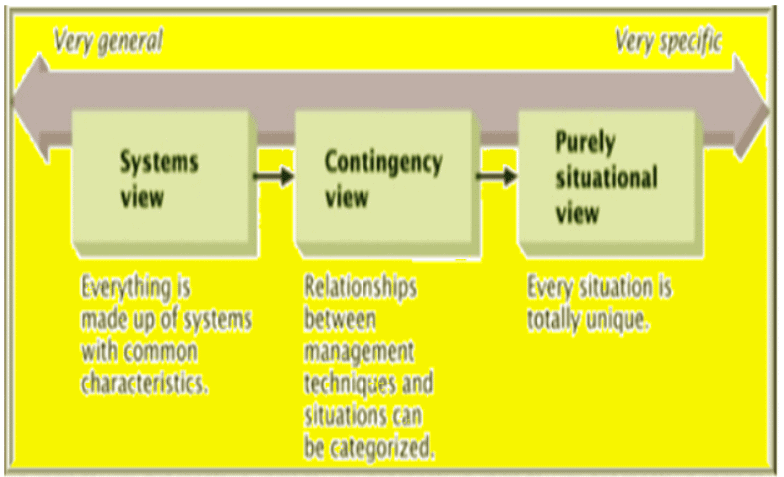Classical, Neoclassical and Contingency Approaches to Organizational Design | NABARD Grade A & Grade B Preparation - Bank Exams PDF Download
Classical Approach
Classical Theory of Organizational Process
- Emphasis: Focuses on structural factors, functions, and activities to achieve objectives.
- Theorists' Focus: Stresses specialization and coordination, with the chain of command facilitating coordination and communication.
- Historical Background: Originated in the late 19th and early 20th centuries, influenced by the Industrial Revolution, and centered on efficiency theories.
- Management Set: Classical theory to management comprises consistent ideas developed during the period.
- Industrial Revolution Impact: Emerged as factory production became continuous, and organizations grew in scale.
- Objectives: Aimed at encouraging employees and enhancing output in large-scale organizations.
- Key Contributors:
- Frederick Taylor
- Henri Fayol
- Management Theories Developed:
- Taylor's Scientific Management
- Fayol's Administrative Management
- Weber's Bureaucratic Management
- Concepts Developed:
- Specialization
- Coordination
- Chain of command
- Theorists' Contributions: Laid the foundation for a comprehensive theory of management.
- Major Concepts: Emphasized efficiency and effectiveness in organizational processes.
Frederick Taylor's Scientific Management Theory (Taylorism)
- Introduction:
- Developed by Frederick Taylor in 1917.
- Also known as Taylorism.
- Basic Principles:
- Division of Labour: Breakdown of tasks for efficiency.
- Scalar and Functional Processes: Unity of command, chain of command, delegation of authority, defining responsibility, and accountability.
- Structure - Line and Staff: Organizational structure combining line and staff roles.
- Span of Control: Determining the number of subordinates a manager can effectively oversee.
- Early Success:
- Taylor achieved success initially by improving production.
- Emphasized obtaining the best equipment and people.
- Scrutinized each component of the production process.
- Analytical Approach:
- Analyzed tasks independently to find optimal combinations for increased production.
- Limitations in Modern Companies:
- Taylorism faced challenges in modern companies.
- "Production first, people second" approach led to:
- Declining production and quality.
- Displeasure with work.
- Loss of pride in workmanship.
- Decline in organizational pride.
General approach of scientific management

Henri Fayol - Administrative Functions
- Introduction:
- Major contributor to Classical Theory.
- Focused on managerial aspects rather than workers.
- Administrative Functions:
- Planning: Strategic thinking and setting goals.
- Organizing: Structuring tasks and resources efficiently.
- Commanding: Providing clear instructions and leadership.
- Coordinating: Ensuring harmonious teamwork.
- Controlling: Monitoring performance and ensuring alignment with goals.
- Managerial Emphasis:
- Fayol emphasized administrative features in organizations.
- Highlighted the role of managers in guiding and controlling the organization for high performance.
Max Weber - Bureaucracy
- Introduction: German sociologist, contributor to Classical Approach.
- Bureaucracy Emphasis:
- Built on Taylor's theories.
- Focused on reducing diversity and vagueness in organizations.
- Key Features:
- Hierarchical Structure: Emphasized clear authority and control.
- Division of Labour: Stressed importance of specialization.
- Formal Rules: Established rules for stability and uniformity.
- Organizational Behaviour:
- Viewed organizational behaviour as a system of human interactions.
- Cause and effect understanding of all behavior.
- Purpose of Bureaucracy:
- Aimed to reduce frustrations and irrationalities in large organizations.
- Sought to establish a fair relationship between management and workers.
Bureaucratic Approach

Classical Approach Overview
- Era Suitability:
- Best suited in the early 1900s.
- Addressed issues like a growing workforce, high demand, mechanization, and job standardization.
- Focus Area:
- Concentrates on the structure of formal organizations.
- Overlooks individual personality, informal groups, and conflicts within the organization.
- Nature of Organisation:
- Views the organization as a structured entity centered on work, not individuals.
- Emphasizes a task-oriented perspective.
- Management Style:
- Characterized as authoritarian and autocratic (Theory X).
- Centrality of work over personal considerations.
Classical Theory Critique
- Insight Limitation:
- Offers valuable insights into organizational nature.
- Lacks attention to individual interactions, informal groups, and conflicts.
- Managerial Style:
- Associated with an authoritarian and autocratic management approach.
- Primarily concerned with task-focused organizational structure.
There are numerous disadvantages of Classical Theory:
- This approach ignores human behaviour and human relation. There is an absence of rapid and free channels of communication, discounting innovation, initiative and change. It has been observed that classical theory of organization design is lacks in flexibility and adaptability. There is tight control through force and coercion. In this approach, there is an absence of intrinsic rewards.
- Classical management theory was rigid and mechanistic. The limitations of classical organization theory rapidly became apparent. Its major insufficiency was that it tried to explain peoples' enthusiasm to work strictly as a function of economic reward.
The Neo-classical Approach
- Development Basis:
- Evolved with a human-oriented approach.
- Emphasis on understanding individual needs, drives, behaviors, and attitudes.
- Expansion of Classical Frameworks:
- Recognizes and builds upon early classical theories.
- Introduces significant qualifications and adjustments.
- Integration of Behavioral Sciences:
- Integrates behavioral sciences into management thought.
- Aims to address issues arising from classical theory practices.
- Shift in Management Focus:
- Shifts focus from production, structures, and technology to the employee.
- Prioritizes understanding and addressing employee needs.
- Motivation and Structure Questions:
- Focuses on answering questions related to motivating, structuring, and supporting employees.
- Stresses the importance of considering social needs to avoid resistance and lower performance.
- Employee-Centric Structure:
- Workers are structured to regularly share tasks, information, and knowledge.
- Aims to fulfill socialization needs and enhance creativity.
- Emergence of Human Relations and Behavioral Schools:
- Two major groups, Human Relations School and Behavioral Schools, emerged during the 1920s and 1930s.
- Develop the Neo-Classical Theory with a focus on human relations movement and behavioral science approach.
- Coordinated Activities and Collaboration:
- Highlights that effective coordination requires collaboration among people.
- Advocates for a people-oriented organizational structure that incorporates both formal and informal organizations.
- Theory-Y Approach:
- Emphasizes individual and workgroup concepts.
- Stresses interpersonal relations and the need for two-way communication in developing a humanized organizational structure.
Neo-Classical Approach Contributions:
- Emphasis on Informal Organizations:
- Recognizes the role of informal organizations as agents of social change.
- Highlights the significance of informal leadership.
- Development of Motivational Theory:
- Contributes to the development of motivational theories.
- Focuses on understanding and enhancing employee motivation.
- Theory of Coordination and Leadership:
- Establishes a theory of coordination within organizations.
- Addresses the principles and practices of effective leadership.
Evolution and Hawthorne Studies:
- Origins in Hawthorne Studies:
- Neo-classical approach emerges, influenced by the Hawthorne studies in the 1920s.
- Hawthorne Studies reveal the importance of social factors, especially employee relationships, in organizational dynamics.
- Addressing Limitations of Classical Theory:
- Develops to overcome the shortcomings of the classical theory.
- Recognizes the need to consider social aspects alongside structural and procedural factors.
- Key Experiments at Hawthorne:
- Series of experiments conducted, including one on workplace lighting and its impact on productivity.
- Unexpected findings reveal that changes in social conditions significantly affect group productivity.
- Role of Social Factors:
- Conclusions drawn from experiments emphasize the influence of social factors.
- Workers' desires for companionship and support at work emerge as critical elements.
- Overall Impact:
- Neo-classical approach marks a shift from rigid structural focus to a more holistic understanding of organizations, giving due importance to human aspects, motivation, and social dynamics.
Hawthorne Studies in Organizational Behavior
 Classical and neoclassical approach of organization made exceptional contribution to the development of management thought. In classical approach, attention was more on jobs and machines. In neoclassical, emphasis was on increasing production through an understanding of people. Many proponents of this theory stated that if managers understand their people and adjust their organizations to them, then organization will succeed. However, the classical theory focuses on task and structure while the neoclassical theory emphasizes people aspect.
Classical and neoclassical approach of organization made exceptional contribution to the development of management thought. In classical approach, attention was more on jobs and machines. In neoclassical, emphasis was on increasing production through an understanding of people. Many proponents of this theory stated that if managers understand their people and adjust their organizations to them, then organization will succeed. However, the classical theory focuses on task and structure while the neoclassical theory emphasizes people aspect.
Table: Distinction between classical neoclassical approaches:

Contingency Theory: Understanding Organizational Design
1. Classical and Neoclassical Views:
- Classical and neoclassical theorists perceived conflict as a destabilizing factor to be avoided for maintaining stability.
2. Contingency Theory Overview:
- Contingency theory sees conflict as inevitable but manageable.
- It provides a foundational framework for studying organizational design, emphasizing the importance of alignment with contingencies.
3. Effective Organizational Structure:
- Contingency theory asserts that the effectiveness of organizational structure lies in its alignment with specific contingencies.
- The structure should adapt to the unique circumstances of the organization.
4. Theoretical Principles:
- Core principles state that optimal practices depend on the specific contingencies present.
- Theorists focus on identifying and measuring conditions that influence outcomes.
5. Practical Application:
- Given the substantial variations in human service practices, contingency theory offers a practical model for adaptation.
- It recognizes that organizational structures need to be flexible based on contextual factors.
6. Contingency in Practice:
- In contingency theory, the term "contingency" reflects an association between phenomena.
- The presence of one phenomenon allows conclusions about another, emphasizing interdependence.
7. Organizational Structure Suitability:
The theory suggests that the most suitable organizational structure depends on multiple factors:
- Organizational goals
- Environmental factors
- Technology usage
- Rate of change
- Managerial style
- Organizational size
- Other dynamic forces
8. Leadership and Organizational Structures:
- Contingency theory is derived from leadership and organizational structures, recognizing their interplay in effective management.
Contingency Approach in Management: Unveiling Organizational Adaptability
1. Emergence of Contingency Approach:
- The contingency approach arose in the late 1960s as a response to the limitations of classical theories like Weber's bureaucracy and Taylor's scientific management.
- These theories overlooked the influence of environmental factors on management style and organizational structure.
2. Joan Woodward's Contribution:
- Joan Woodward (1958) played a pivotal role in initiating the contingency approach.
- She asserted that successful organizations, despite industry and technology differences, exhibited distinct organizational structures.
3. Contingency Factors:
- Contingency theory emphasizes that management decisions are influenced by various aspects of the environment, termed as contingency factors.
4. Chandler's Perspective:
- Chandler (1962) proposed that organizational development aligns with strategy, emphasizing the idea that form follows function.
- Organizations are expected to adapt in a rational, chronological, and linear manner to environmental changes for efficiency.
5. Lawrence and Lorsch's Findings:
- Lawrence and Lorsch (1969) explored organizational adjustments to environmental dynamics, highlighting the importance of decentralized decision-making in highly unstable industries.
- Managers at all levels were granted authority to make contingent decisions based on the current situation.
6. Strengths of Contingency Approach:
- Motivates managers to thoroughly analyze individual and situational differences before making decisions.
- Encourages adaptability and flexibility in managerial practices.
7. Criticisms and Shortcomings:
- Often used as an excuse to avoid acquiring formal knowledge about management.
- The contingency perspective acknowledges that the efficiency of managerial practices varies based on specific situational circumstances.
Figure: Contingency view:

Conclusion
In summary, the Classical and Neoclassical approaches have significantly contributed to the evolution of organizational processes, enabling nations to engage in global markets. These approaches, developed during periods of rapid economic growth and industrial expansion, introduced various production techniques. In contrast, the contingency view differs from the formal schools of management, such as classical, behavioral, and management science, which assumed a universal approach. These schools aimed to discover one best way of managing applicable to all organizations. However, the contingency approach recognizes that not all situations and individuals can be handled identically. It emphasizes that managerial actions depend on specific circumstances, promoting situational appropriateness over universal principles.
|
847 videos|1297 docs|420 tests
|
FAQs on Classical, Neoclassical and Contingency Approaches to Organizational Design - NABARD Grade A & Grade B Preparation - Bank Exams
| 1. What is the classical approach to organizational design? |  |
| 2. What is the bureaucratic approach to organizational design? |  |
| 3. What is the neo-classical approach to organizational design? |  |
| 4. What is contingency theory in organizational design? |  |
| 5. How does the contingency approach contribute to organizational adaptability? |  |





















